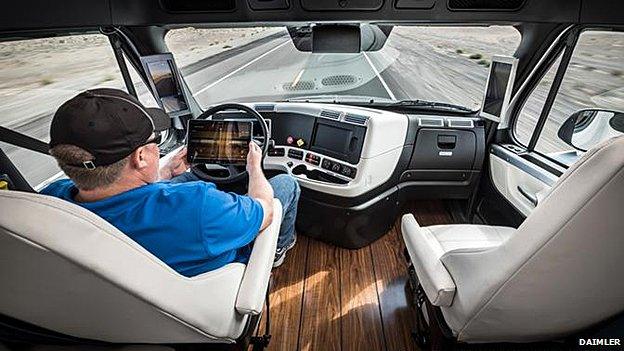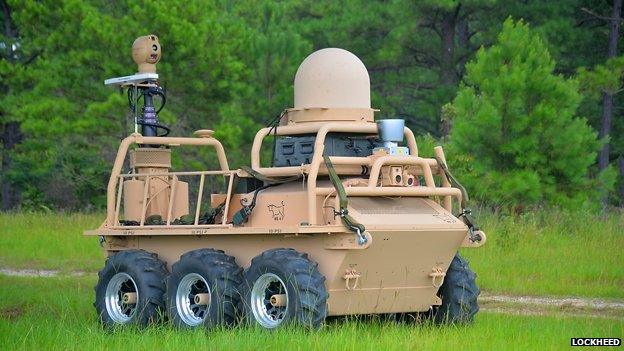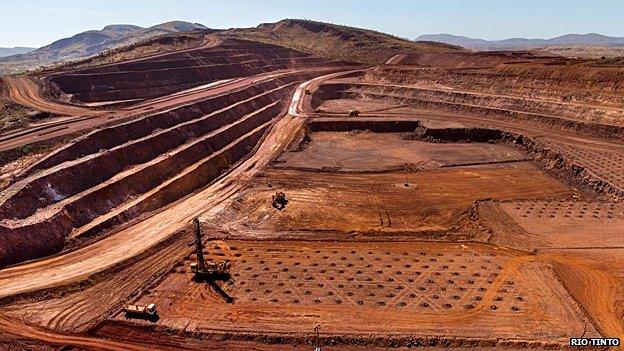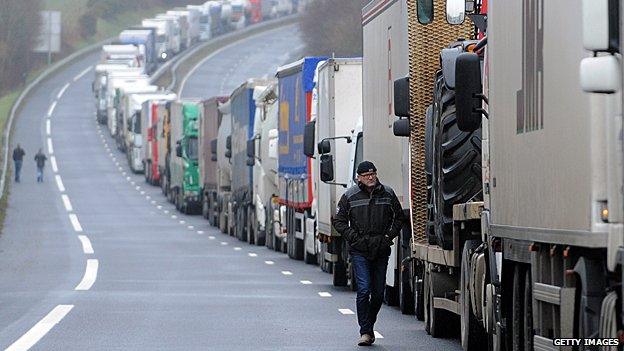Driverless convoy: Will truckers lose out to software?
- Published

Living the dream: Daimler's new autonomous lorries drive themselves while the safety driver can read a book, watch the game or write a bestseller
Sleepiness and stress are perennial risks for the long distance lorry driver, and accidents are sadly too frequent.
However, a radical new driverless truck being trialled by Daimler may offer a solution.
Earlier this month, the automotive giant was granted the first licence ever to test such a vehicle on a public highway by the US state of Nevada.
Using a combination of GPS, radar and video cameras, the Freightliner Inspiration can drive by itself on open stretches of road, freeing a driver to take breaks, check his emails and even watch DVDs.
The catch is that a qualified person must remain in front of the wheel at all times so they can take control if something goes wrong.
However, proponents say that the technology, once perfected, will reduce accidents by lessening the chance of human error, boost productivity and cut emissions.

What Daimler's driverless truck will look like on the road in Nevada

The dashboard showing that the vehicle is in autonomous mode
Fully automatic
It is perhaps ironic that fully driverless vehicles are already being used in low-speed, controlled environments.
Rio Tinto, for instance, operates over 50 self-drive trucks at its mines in Pilbara, Australia, while Lockheed Martin has built a range of autonomous trucks for the US Army.
One such is the SMSS vehicle which made its combat debut in Afghanistan in 2011. According to Lockheed, it can "track and follow" the movements of a single soldier, transport supplies over rough terrain and carry out casualty evacuations, all without the aid of a human driver.
Where things get tricky is moving these vehicles onto public roads, with other vehicles and pedestrians.
Daimler's truck, for example, only works on freeways, and a human must take over when it reaches city streets - a far more "complicated traffic environment", according to the company.
The good news, predicts the German consultancy Roland Berger, is that we will overcome these technical hurdles within the next 10-15 years - in fact by 2030, we will probably have the capacity to take human drivers out of the equation entirely.
Much more challenging, however, will be solving the deeper social and legal barriers.
"There are some really big ethical issues," explains Wolfgang Bernhart, partner at Roland Berger.
"They relate to how a computer-controlled vehicle should react in certain situations, when an accident is unavoidable and the vehicle has to decide what to do and whom to harm.
"It requires a clear consensus in societies about what to do in terms of liability, and it will take a very long time to reach."

This military vehicle, the SMSS can track a single soldier, transport supplies over rough terrain and carry out casualty evacuations
Playing god
He gives the example of a fully self-driving truck, which unexpectedly hits an object that has fallen onto a highway and loses control.
The truck may at this point have to make a choice: veer to the right onto a walkway, where a mother and her children are walking and would be killed; or to the left where three elderly people are crossing the road.
"If a human was at the wheel, he would have to make this really tough decision in the moment," explains Mr Bernhart.
"But if a truck is being powered by a computer algorithm, then these decisions would have to be made in advance by the programmers. And who is going to accept such a decision that sacrifices three elderly people instead of a mother and her children?"
Scott Le Vine, a transport expert at Imperial College, says the corollary would be endless lawsuits for automotive firms. And that could really put off customers and investors.
However, he does believe we could find a way round it.
"What you would want as the programmer of such a vehicle is to be following a 'classical standard' of reasonable behaviour," he says.
"Lawmakers would obviously have to establish that, the question being 'what would a reasonable man do?' And if you can demonstrate you followed that when building your algorithm, then you would have administered your duty of care."

Rio Tinto operates over 50 self-drive trucks at its mines in Pilbara, Australia
The bumpy road to adoption
Perhaps not surprisingly only two US states - Nevada and California - have granted licences for the testing of autonomous vehicles on public roads - and both require 'safety' drivers to be present.
However, other states and countries are working to update their laws, and both Mr Le Vine and Mr Bernhart expect public acceptance to increase as the benefits become clear.
As Mr Bernhart notes, almost every automaker is now piloting or using forms of autonomous driving technology - and the market for hardware and software could be worth $40-$60m by 2030.
Still, jumping further into the future, what specifically would the impact be if trucks like Daimler's become ubiquitous - and drivers became mere accessories?
According to the American Trucker Association, in the US alone, there are 3.5 million professional truck drivers, external, and an additional 5.2 million people employed within the trucking industry who don't operate vehicles.

Driverless lorries could see the end of blockades by striking truck drivers in Europe
That's a whopping 8.7 million trucking-related jobs that could face some form of displacement.
There could be upsides too, though, not least in terms of safety. In 2012, 330,000 large trucks were involved in crashes in the US, killing nearly 4,000 people, external, the majority of them caused by driver error.
However, according to one study, driverless trucks could in future reduce collisions by more than 70%, as they'll drive more slowly and react to challenging environments, generally, in the safest way.
Another plus is that autonomous drivers could help tackle skills shortages.
According to the American Trucking Associations, the US trucking industry could see a shortfall of some 240,000 qualified drivers by 2022.
While at the moment this is just speculation, the mass production of self-driving trucks seems inevitable - and the results will be hard to ignore.